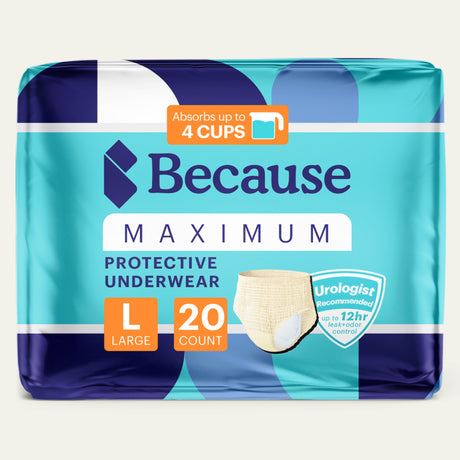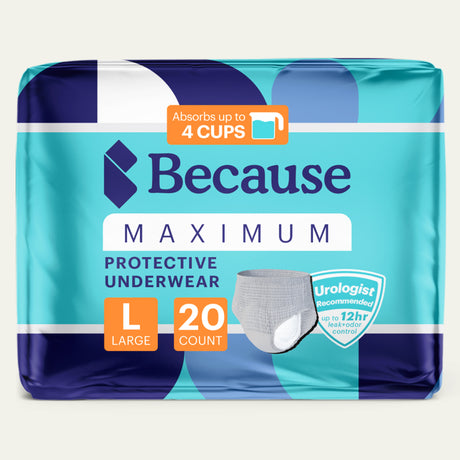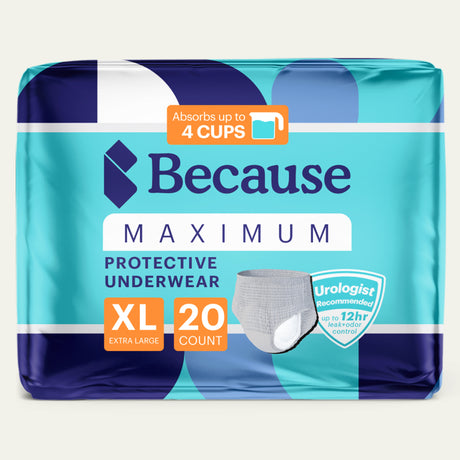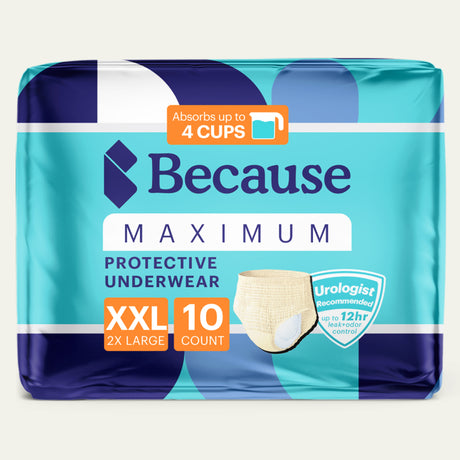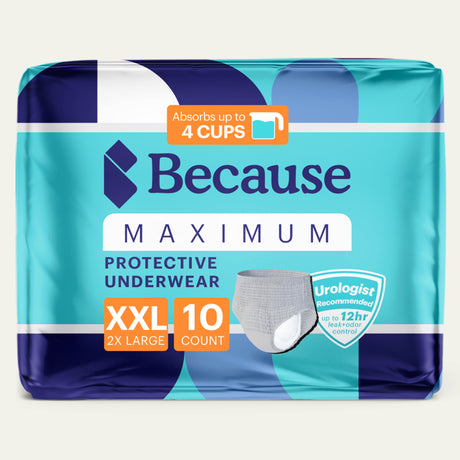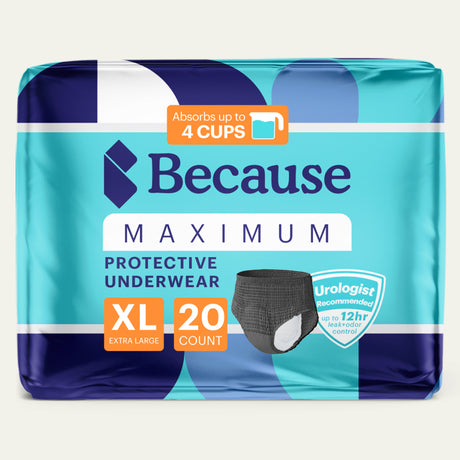Liver disease and incontinence, though seemingly unrelated, are two significant health issues that can profoundly impact an individual's quality of life. Over 100 million Americans are living with some form of liver disease, which encompasses a range of conditions affecting liver function, including hepatitis, cirrhosis, and fatty liver disease. Incontinence, on the other hand, refers to the loss of bladder control, leading to the involuntary leakage of urine. Understanding the link between liver disease and incontinence is crucial because it can help identify underlying health issues and improve the management of these conditions.
By recognizing how liver dysfunction can influence bladder control, healthcare providers can offer more comprehensive care, ensuring better outcomes for those affected by both ailments. This awareness is essential for developing effective treatment plans and enhancing the overall well-being of patients.
What is Liver Disease?
Liver disease disrupts the liver's ability to perform vital functions, such as detoxifying harmful substances, producing bile for digestion, and regulating blood clotting. Conditions like hepatitis cause inflammation, while cirrhosis leads to scarring, both of which impair the liver's efficiency. Over time, these disruptions can lead to systemic complications, affecting various bodily systems. There are 7 main categories of liver disease: hepatitis, cirrhosis, non-alcoholic fatty liver disease, alcoholic liver disease, liver cancer, genetic liver diseases, and autoimmune liver diseases.
Common Types of Liver Disease:
The three most common types of liver disease are Hepatitis, Cirrhosis, and Non-Alcoholic Fatty Liver Disease (NAFLD. Each of these conditions significantly impacts liver function and overall health.
Hepatitis
Hepatitis is an inflammation of the liver, commonly caused by viral infections, but it can also result from alcohol use, toxins, and autoimmune diseases. There are several types of viral hepatitis, including Hepatitis A, B, C, D, and E, each with distinct transmission methods and health impacts. Chronic hepatitis B and C are particularly concerning as they can lead to long-term liver damage, cirrhosis, and liver cancer.
Cirrhosis
Cirrhosis is a severe condition characterized by the irreversible scarring of liver tissue due to long-term damage, impairing liver function. Cirrhosis is the 12th leading cause of death in the US. It can result from chronic alcohol abuse, viral hepatitis (particularly hepatitis B and C), and non-alcoholic fatty liver disease. Over time, the scar tissue replaces healthy liver cells, leading to complications such as liver failure and increased risk of liver cancer.
Fatty Liver Disease
Fatty liver disease is a condition where excess fat builds up in the liver, potentially leading to liver damage. There are two main types: Non-Alcoholic Fatty Liver Disease (NAFLD), which occurs in individuals who consume little to no alcohol and is often associated with obesity and metabolic syndrome, and Alcoholic Fatty Liver Disease, which results from excessive alcohol consumption. 90% of people who drink heavily develop Alcoholic Fatty Liver. Both types can progress to more severe liver conditions if not managed properly.

Symptoms and Causes of Liver Disease
The symptoms of liver disease can vary widely depending on the specific type and severity but commonly include jaundice (yellowing of the skin and eyes), fatigue, and abdominal pain or swelling. Other symptoms may include dark urine, pale stool, chronic nausea or vomiting, loss of appetite, easy bruising or bleeding, and swelling in the legs and ankles. In advanced cases, confusion, memory problems, and changes in personality or consciousness can occur due to the buildup of toxins in the blood.
Liver disease can arise from various factors, making early intervention crucial for effective prevention and management. Below is a list of common causes of liver disease and liver damage:
- Viral Infections
- Alcohol Abuse
- Obesity
- Diabetes
- Genetic Disorders: Conditions such as Hemochromatosis (iron overload), Wilson's disease (copper overload), and Alpha-1 Antitrypsin Deficiency.
- Autoimmune Diseases: Conditions such as in autoimmune hepatitis, primary biliary cholangitis (PBC), and primary sclerosing cholangitis (PSC).
- Medications and Toxins: Overuse of certain medications (e.g., acetaminophen), exposure to industrial chemicals, and ingestion of toxic substances.
- Biliary Diseases: Diseases affecting the bile ducts, such as gallstones and biliary atresia.
What is Incontinence?
Incontinence is the involuntary loss of bladder and/or bowel control, leading to the unintentional leakage of urine or fecal matter. It is a common condition that can affect individuals of all ages, although it is more prevalent among older adults. Incontinence can significantly impact daily activities and quality of life, causing both physical discomfort and emotional distress. There are 6 types of incontinence. Understanding the type and cause of incontinence is essential for effective treatment and management.

Types of Incontinence:
- Stress Incontinence: leakage during physical exertion
- Urge Incontinence (also known as overactive bladder or OAB): characterized by a sudden, intense need to urinate
- Overflow Incontinence: incontinence that results from an inability to empty the bladder fully
- Functional Incontinence: when physical or cognitive impairments prevent timely bathroom access
- Reflex Incontinence: characterized by the involuntary loss of urine due to a sudden, uncontrollable bladder contraction without the usual sensation of needing to urinate
- Mixed Incontinence: having symptoms of both stress and urge incontinence concurrently
Causes of Incontinence
Incontinence can be caused by a variety of factors, including physical conditions and lifestyle factors. Below are 10 of the most common causes of incontinence:
- Aging: Age-related changes in bladder and urethral function can lead to incontinence.
- Childbirth: Vaginal delivery can weaken pelvic floor muscles, leading to stress incontinence.
- Menopause: Decreased estrogen levels can affect the strength and function of the urinary tract.
- Prostate Problems: Enlarged prostate or prostate surgery in men can lead to incontinence.
- Neurological Disorders: Conditions such as Parkinson’s disease, multiple sclerosis, and spinal cord injuries can disrupt nerve signals to the bladder.
- Obesity: Excess weight increases pressure on the bladder, contributing to stress incontinence.
- Chronic Coughing: Conditions like chronic bronchitis or asthma can put pressure on the pelvic floor muscles.
- Diabetes: High blood sugar levels can damage nerves that control the bladder.
- Medications: Diuretics, sedatives, and certain blood pressure medications can affect bladder control.
- Urinary Tract Infections (UTIs): Infections can irritate the bladder, leading to temporary incontinence.
How Liver Disease Can Lead to Incontinence
Liver disease can lead to incontinence through several mechanisms. One key factor is fluid retention, common in liver disease, which increases pressure on the bladder, leading to urinary urgency and leakage. Additionally, liver dysfunction can result in the buildup of toxins in the body, which can impair nerve function and disrupt the normal signals between the brain and bladder. Medications used to manage liver disease, such as diuretics, can also contribute to increased urinary frequency and incontinence.
Diagnosis and Treatment Options
Liver disease is diagnosed through a combination of medical history, physical examination, and diagnostic tests. Blood tests, such as liver function tests, assess levels of liver enzymes and other substances to evaluate liver health. Imaging studies like ultrasound, CT scans, and MRI, along with liver biopsies, provide detailed insights into the liver's structure and any potential damage.
Treatment options:
Treatment options for liver disease depend on the specific type and severity of the condition but often include lifestyle changes, such as adopting a healthy diet and avoiding alcohol. Medications may be prescribed to manage symptoms and treat underlying causes, such as antiviral drugs for hepatitis or medications to reduce liver inflammation. In severe cases, procedures like liver transplantation may be necessary to replace a damaged liver with a healthy donor liver.
Coping Strategies and Support
Seeking emotional support while undergoing treatment or living with liver disease is crucial, as it helps patients cope with the psychological stress and anxiety associated with the condition. Emotional support from healthcare providers, support groups, and loved ones can significantly enhance overall well-being and improve adherence to treatment plans.
Practical tips for managing incontinence
Managing incontinence effectively involves a combination of lifestyle adjustments and practical strategies. Pelvic floor exercises, such as Kegels, can strengthen the muscles that control urination. Maintaining a healthy weight and avoiding bladder irritants like caffeine and alcohol can also reduce symptoms. Additionally, using absorbent products, scheduling regular bathroom visits, and staying hydrated with the right fluids can help manage incontinence and improve quality of life.
Support resources:
Support resources for those with liver disease include healthcare professionals, such as hepatologists and dietitians, who provide specialized care and management plans. Support groups, both in-person and online, offer a community for sharing experiences and emotional support. Organizations like the American Liver Foundation provide educational resources, advocacy, and connections to local support services.
If you're struggling with incontinence, join one of our private support groups today!
Women's Incontinence Support Group
Men's Incontinence Support Group
If you are experiencing any of the symptoms listed, please speak to your doctor. Seeking medical advice if you suspect you might have liver disease is crucial, as early diagnosis and intervention can prevent further liver damage and improve treatment outcomes. Prompt medical attention ensures appropriate management and reduces the risk of severe complications.
Sources:
American Liver Foundation. (2023, Sept. 11). How Many People Have Liver Disease? Retrieved from https://liverfoundation.org/about-your-liver/facts-about-liver-disease/how-many-people-have-liver-disease/.
American Liver Foundation. (2023, Sept. 11). What is Liver Disease? Retrieved from https://liverfoundation.org/about-your-liver/facts-about-liver-disease/what-is-liver-disease/.
Gao, B. & Zakhari, S. (2018.). Epidemiology and Pathogenesis of Alcoholic Liver Disease. Zakim and Boyer’s Hepatology (Seventh Edition), Pages 334-344.e3. Retrieved from https://www.sciencedirect.com/topics/medicine-and-dentistry/alcoholic-fatty-liver#:~
=Alcoholic%20fatty%20liver%20(steatosis)%20is,hepatocyte%20damage%2C%20and%20formation%20of.















